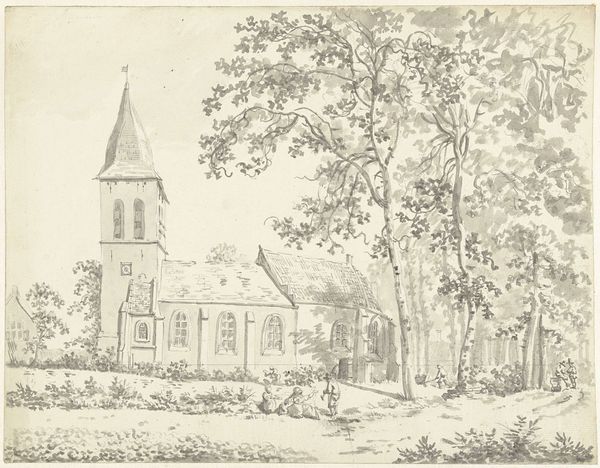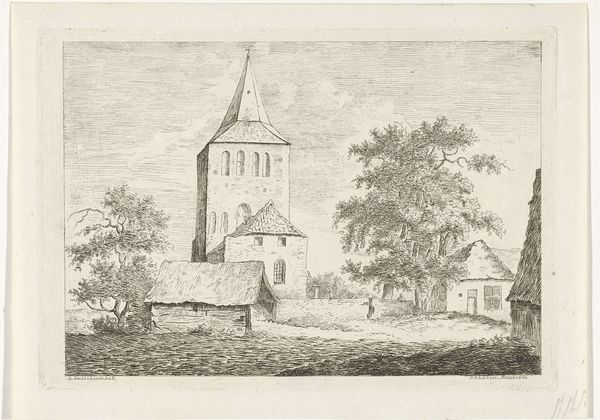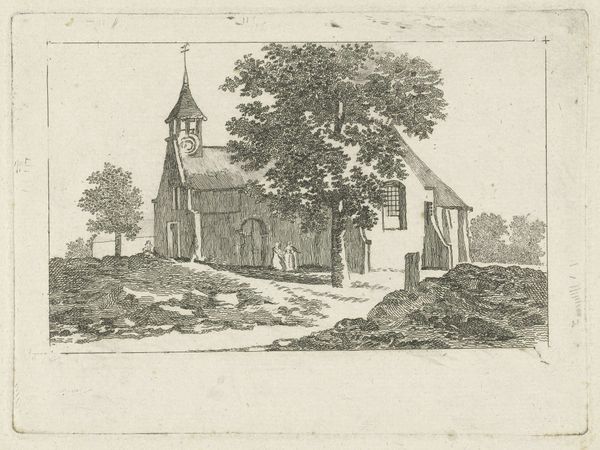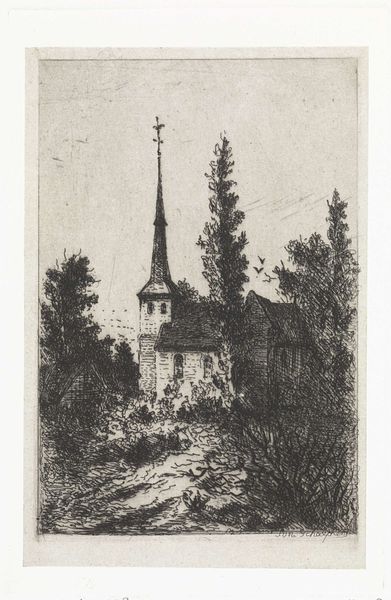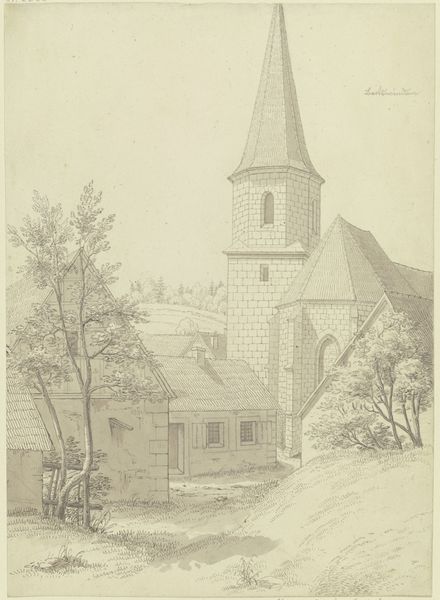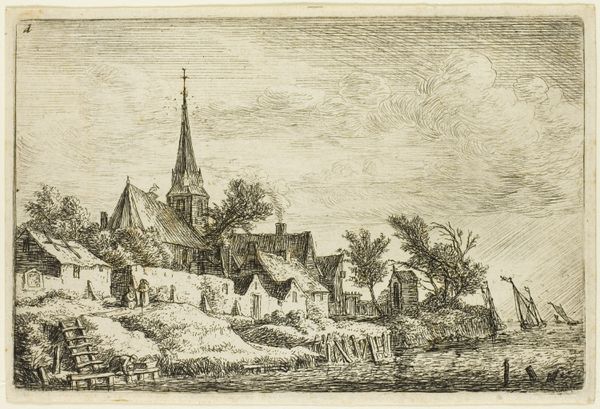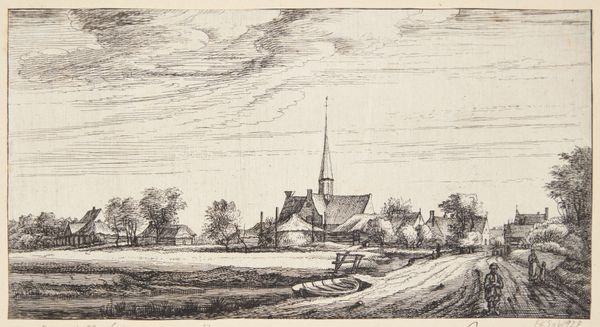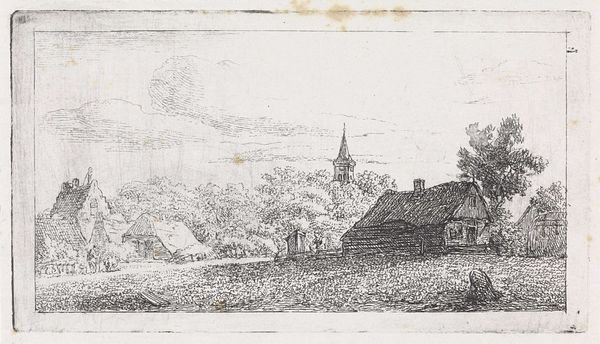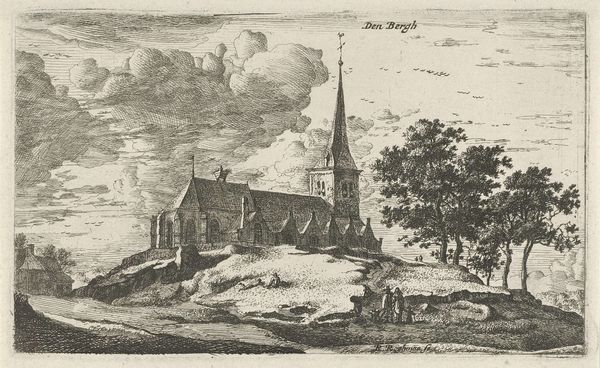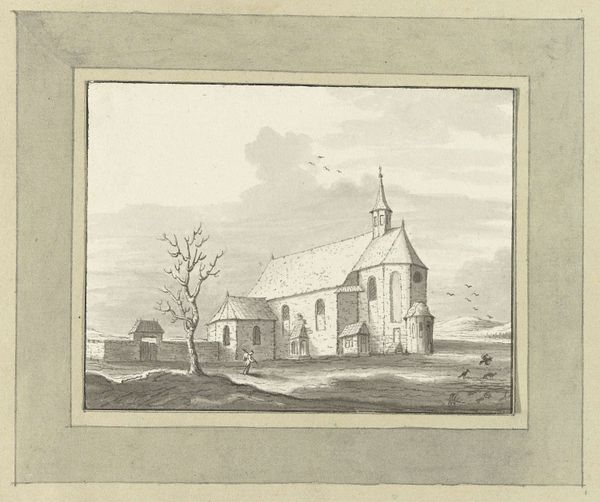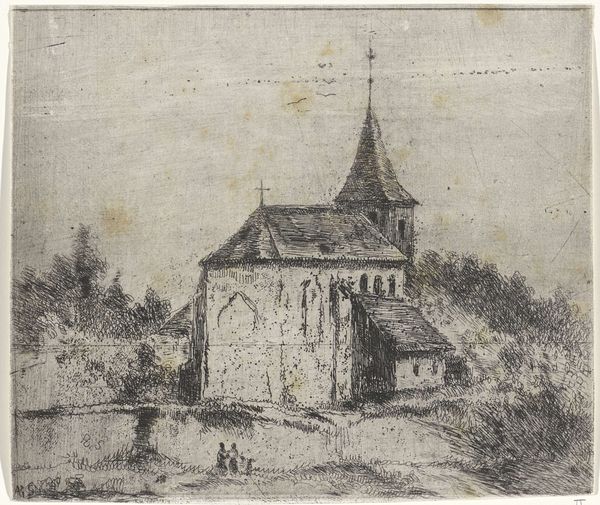
Dimensions: height 91 mm, width 131 mm
Copyright: Rijks Museum: Open Domain
This is an etching of the Kerk van Neerharen, made by Alexander Schaepkens in the 19th century. The etching process involves coating a metal plate with wax, drawing through it to expose the metal, and then immersing the plate in acid. The acid bites into the exposed lines, creating grooves that hold ink. The plate is then cleaned, inked, and pressed onto paper, transferring the image. Look closely at the crisp, precise lines that define the church and the surrounding landscape. The density of these lines creates areas of shadow and depth, giving the image a tactile quality. Etching was a relatively democratic medium, enabling artists to produce multiple copies of their work, making art more accessible to a wider audience. It’s a process deeply intertwined with the rise of print culture and the dissemination of images in the modern era. The fine lines and detailed rendering speak to the artist's skill and the labor-intensive nature of the etching process. The choice of materials and processes informs the work's visual language and connects it to broader social and cultural developments.
Comments
No comments
Be the first to comment and join the conversation on the ultimate creative platform.
